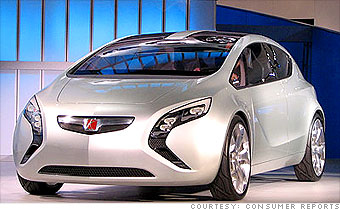Surprisingly, Detroit this January is greener than it has been in decades. Almost every new vehicle introduction at the North American International Auto Show (NAIAS) featured a high-mileage, hybrid, or clean-diesel car. Those vehicles that weren't introduced with a greener-than-thou proclamation included gasoline-saving technologies, such as the Ford "EcoBoost" powertrain that combines direct-injection and turbocharging.
All this comes less than a month after Congress required automakers to increase fuel economy by 40 percent by 2020, amid industry protests that such gains weren't feasible.
At the show, automakers embraced diesel engines because they can save as much as 30 percent in fuel economy and greenhouse gas emissions compared with gas engines. And the latest diesels are powerful, quiet, and nearly as clean as gas engines. Pollution control technologies have flourished since cleaner, low-sulfur diesel fuel was mandated in the end of 2006. This year new urea injection systems will further reduce pollution.
In addition to diesels, the auto show was full of futuristic plug-in hybrid electric vehicles. Plug-in cars get their main power from a regular electrical outlet, but they also have an auxiliary gas or diesel engine to charge the battery for longer trips. The biggest benefit is that if the batteries can provide 40 miles of driving, 78 percent of Americans could handle their normal everyday drives on just electricity. While conversion companies have been modifying the current Prius to plug- in for some time, it will be at least until 2010 before factory plug-in hybrids advance from just demonstration vehicles to mainstream production.
Getting batteries big enough for plug-ins depends on developing lithium-ion technology, which saves weight and packs more power into a smaller package. So far, no lithium-ion batteries suitable for cars are commercially available, according to automakers. But Toyota jumped ahead in the race to develop plug-in hybrids by announcing that it would begin building its own batteries (with partner Panasonic) by 2010.
While Toyota is investing in batteries, GM is joining a co-operative venture to develop ethanol made from non-corn feed stocks. GM and partner Coskata say their new process can make ethanol from everything from wood chips to used tires, and do so relatively inexpensively.
In years past, the automakers touted fuel cells and other promising, though far-off technologies at the Detroit show. For 2008, the focus is on addressing consumer demand for better fuel economy in the nearer term. Clearly, green is the color of this auto show season, with a rising tide of increasingly environmentally responsible machines.

